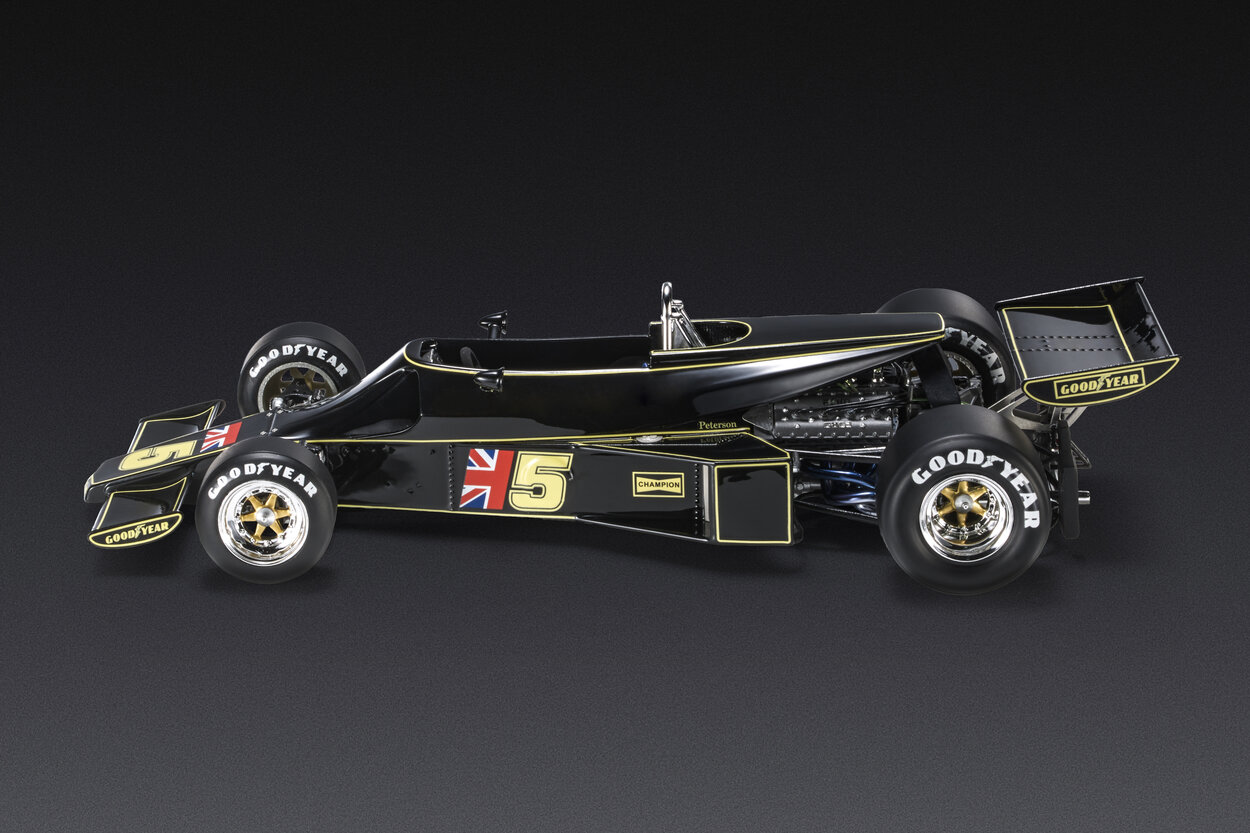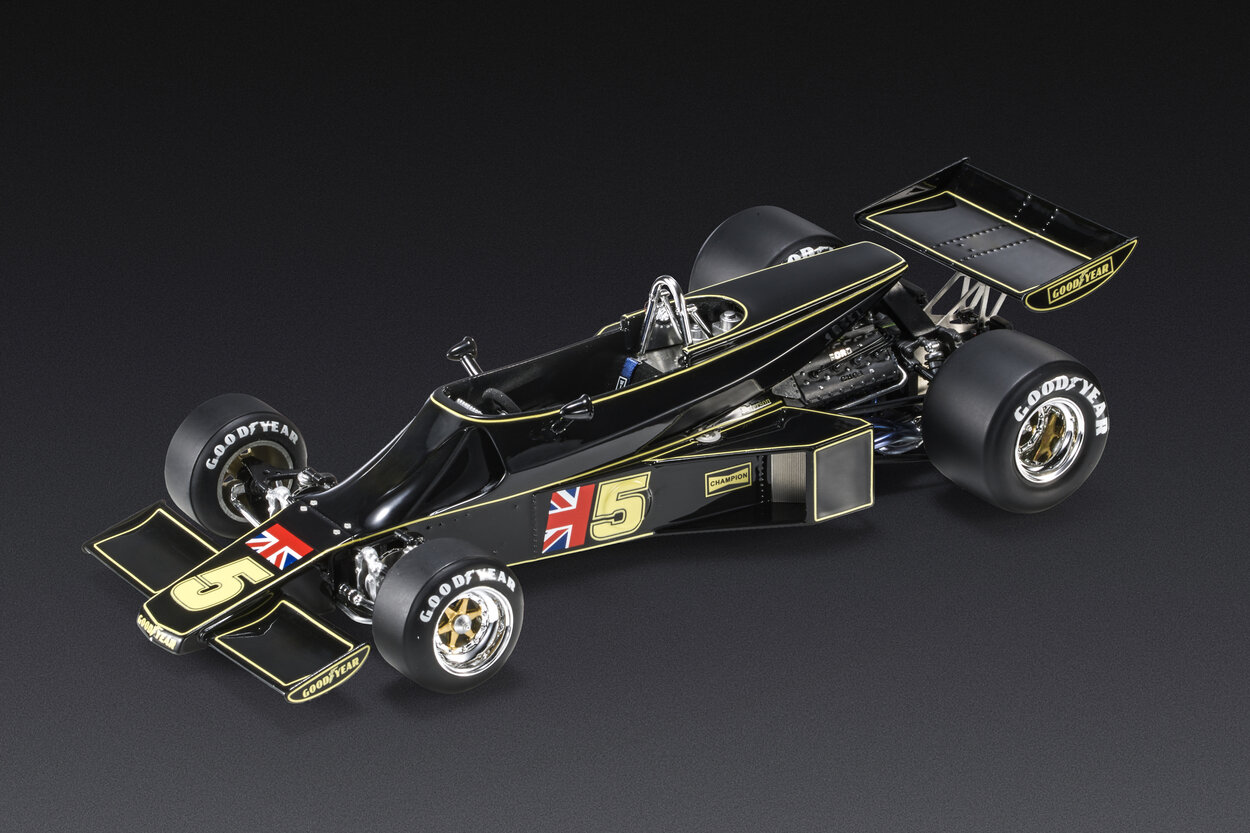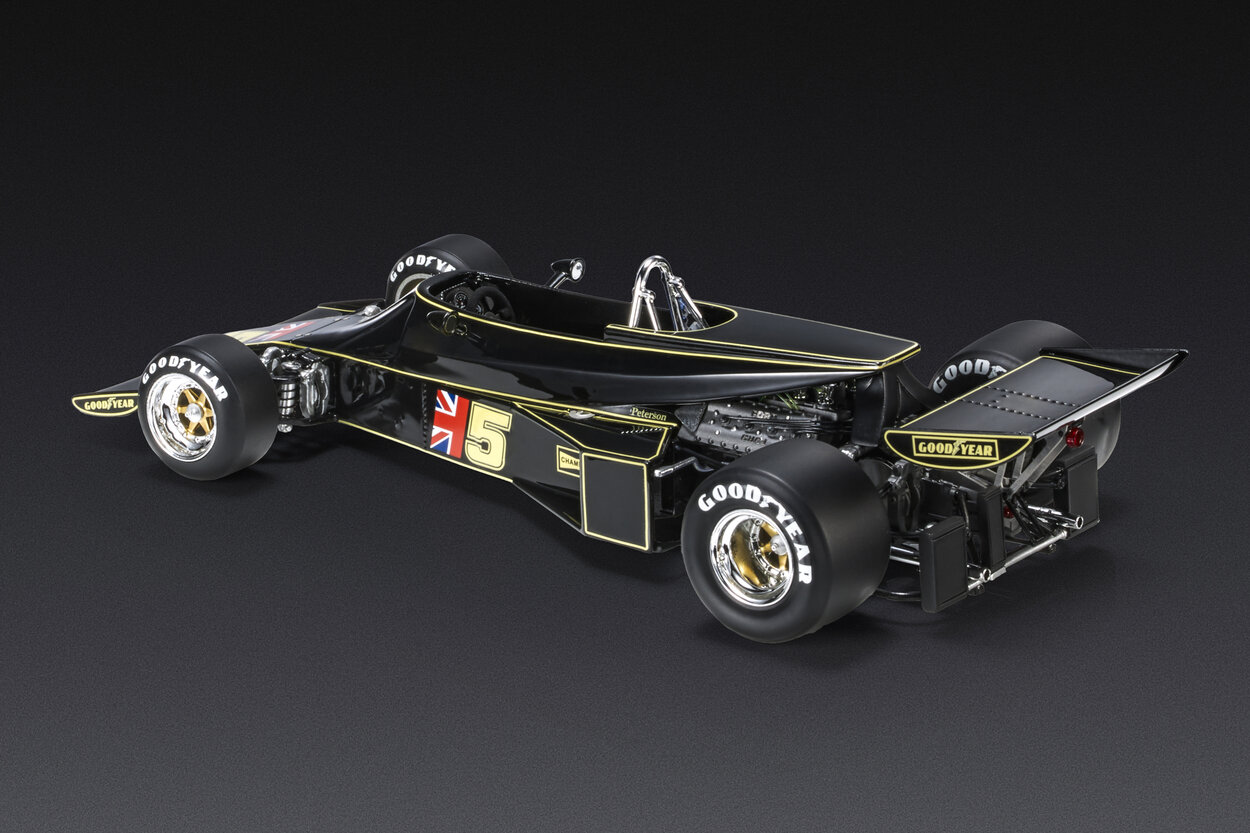Lotus 77
It’s a beautiful car that didn’t have much luck on the tracks and wasn’t particularly loved by the drivers who drove it in the 1976 season. It’s Colin Chapman’s response to the disappointment of the 1976 model and the inability to prolong the career of the historic but now obsolete model 72, which had still competed in the Formula 1 World Championship in 1974 and 1975.
The only element the Lotus 77 retains from its predecessors is the Ford-Cosworth V8 engine. Everything else is effectively new, starting from the idea of a suspension system that adapts to the circuits on which the car races. The press dubbed it “The Adjustcar.” However, the idea only partially worked because the multitude of adjustment options it offered ended up confusing the drivers. Ronnie Peterson had enough after just one race and left Lotus. Mario Andretti and Gunnar Nilsson had their hands full in a challenging year – a year that ended with a victory, the only one for the 77 model.

Drivers:
Mario Andretti: Despite skipping the Monaco Grand Prix to participate in the Indianapolis 500, starting from this season, the Italian-American driver focuses on Formula 1 in an attempt to win the World Championship title. In the first part of the season, he suffers a series of consecutive retirements. The tide turns in the summer. In the latter part of the season, Mario achieves two third-place finishes at Zandvoort and Mosport, and secures victory in the Japanese Grand Prix to close out the year.
Gunnar Nilsson: The Swede Nilsson replaces his compatriot Peterson starting from the second race of the championship, the South African Grand Prix. Although he secures an encouraging third place on the podium at Jarama in May, like his teammate, the first part of Gunnar’s season is a nearly uninterrupted series of retirements. Then, something changes, and Gunnar scores points in Germany and Japan, and once again takes third place on the podium in Austria.
Our model cars:

The chassis of the 77 is narrower, sleeker, and lighter than the model 72. The bodywork is tapered. Its shapes seem to be designed by the wind and anticipate the two models that will follow, namely the Lotus 78 and 79. After a few races, Chapman repositioned the brakes, initially mounted internally, and the radiators, in an attempt to cool them more quickly. When Tony Southgate arrived at Lotus halfway through the season, he positioned the oil radiator in the center of the nose, significantly improving the car’s weight distribution.

